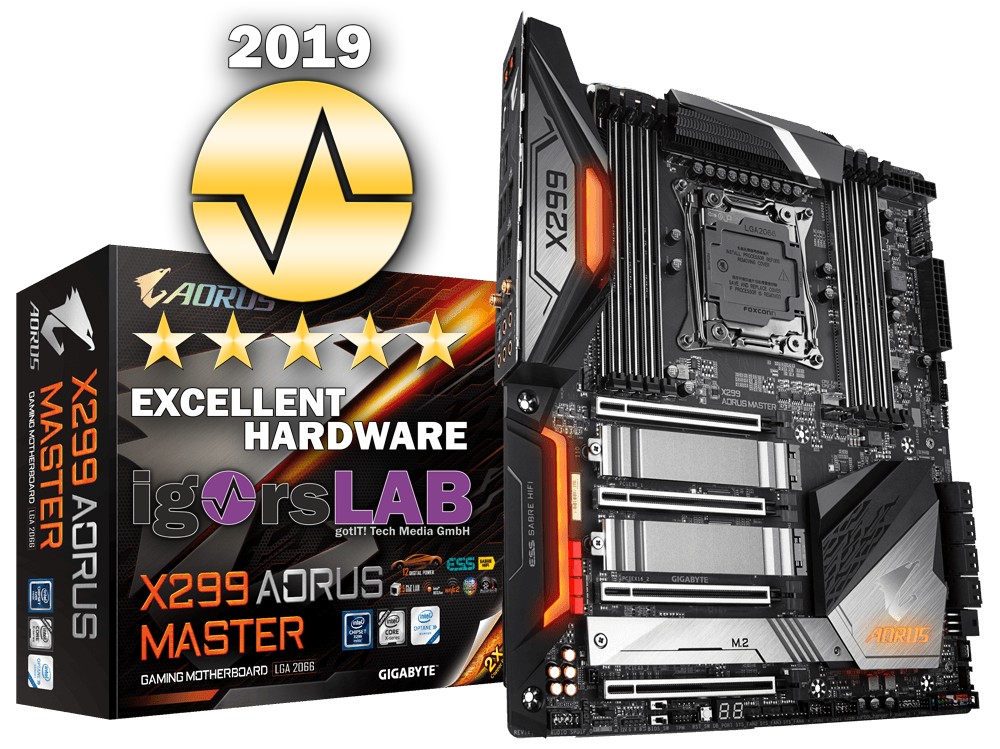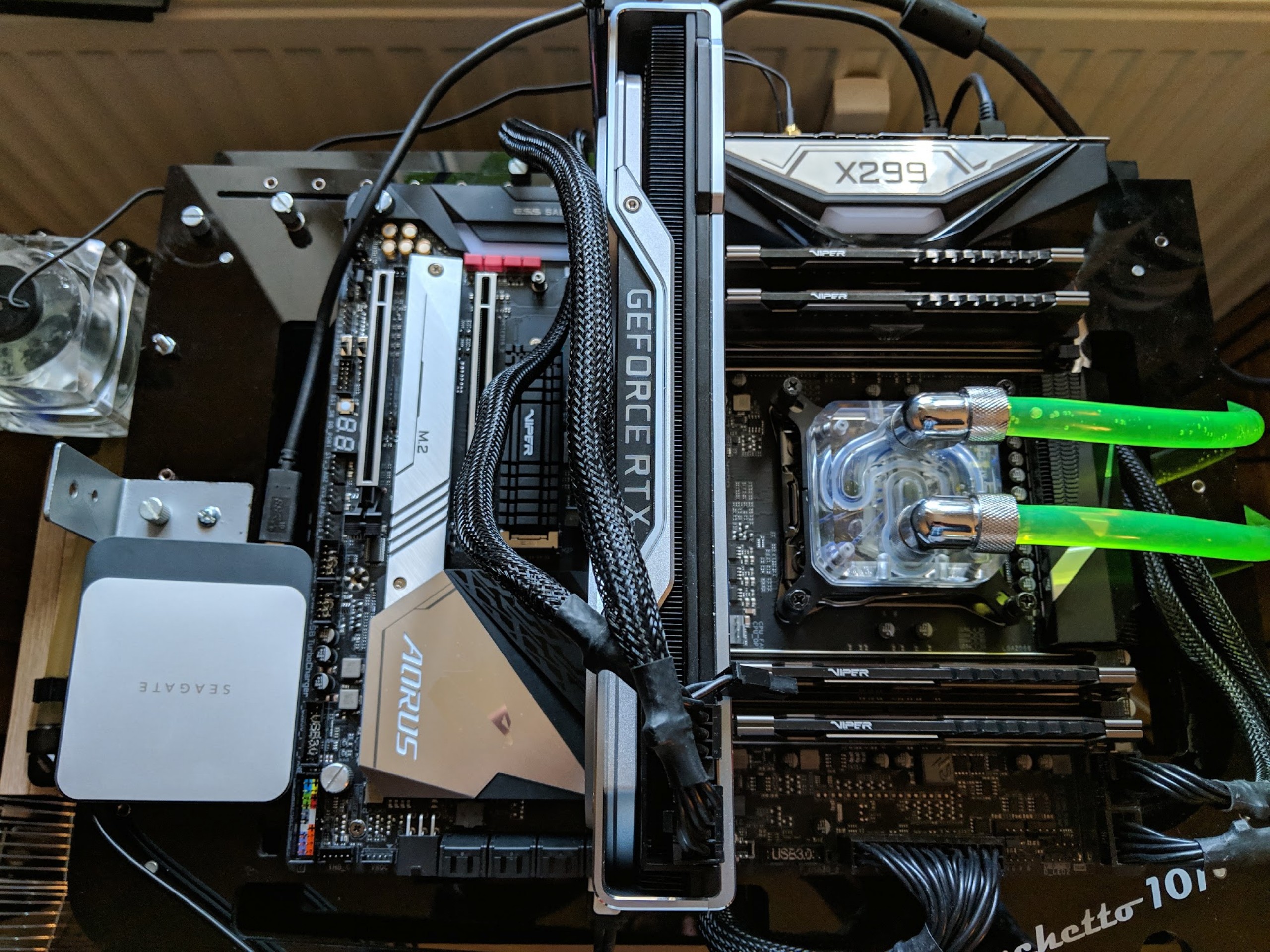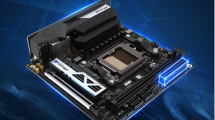Summary
Of course, I cannot avoid a summary, despite all the interim conclusions so far. I was looking for a smart base for my workstation and I'm pretty sure I've found it with the Aorus X299 Master for the next time. With Threadripper 3, of course, the cards will be reshuffled, but by then it will all be enough. What was and is very important to me is a really good cooling performance, especially in the area of voltage converters.
This is exactly where the Aorus X299 Master can really score, because the heatpipe is not an ornamental element (as unfortunately so often), but fully functional. Together with the sufficiently sized lamella heatsinks on the converter area and below the closed I/O Shield structure, as well as the small (and almost silent) fan integrated there, this works demonstrably well. Even without any further airflow. As a stability fanatic, I particularly liked that in the end.
In addition, there is the backplate, which on the one hand stabilized the already quite thick FC4 material of the board and was also passively included in the cooling of the voltage converters. It is therefore not only a pure marketing gag, but a real and measurable added value. this cannot be overstated.
The component selection is fine, the reinforced slots for the graphics card, the RAM and the reinforced EPS connectors are also correct, the latter looking a little silly. But it still looks good. The detachable heatsinks of the M.2 slots are quite massive, so they should work. Otherwise, the board also makes a visually pleasing impression. RGB is also included, but thankfully not so boldly exaggerated that the board could also be put in the window as Christmas lighting.
The performance is good to very good, which is also reflected in the OC results. Easy Tune is easy to use and even delivers serious results, even if manually, of course, there is still something more to do. What is a little annoying is the extremely sluggish GUI of the UEFI BIOS. Before you have moved the mouse over the whole diagonal, the beard has grown 2 cm. The functionality is fine, but the very tough operation is rather annoying.
The advertised sound solution is also fine, with a small limitation. Writing down data sheets from the DAC supplier is not enough, you have to understand what is in it. The 2 volt RMS promised can only be obtained at 250 ohms and more, for normal 32 ohm headphones or headsets it is only 1.44 volts. But I'm sure no one has ever measured that.
The external voltage distance, even when the graphics card is running full, is quite good. But in order to be really happy with the onboard sound, you would need transducers with a high characteristic sensitivity (102 dB SPL/mW or higher), which can cope even with lower output power. This is precisely where ESS's otherwise really useful DAC weakens somewhat.
And because I'm just criticizing: the performance for the WiFi network is maximum average, because especially in the 2.4 GHz band, the throughput for today's possibilities is not quite up to date. The latencies are good and the stability of the connection is too. But overall, there is already a lack of throughput. Even my smartphone is faster. Ethernet and 5 GHz band, on the other hand, can be left standing as it fits.
What fits, however, is disk performance. Whether M.2 with NVMe, SATA or USB 3.1 – the determined values prove that the board is not the bottleneck, if something gets stuck. The scope of delivery is also useful and the manual has also earned its name. Even if it is not available in electronic form in German.

Conclusion
The fact that there are hardly any reviews of the Aorus X299 Master surprises me a little. This is probably also one of the most underestimated products, which definitely did not deserve the ignorance on the part of the testers. So either Aorus has arranged a sample shortage here and served himself an own goal, or the competitors bomb the testers with other products. Because one thing is a fact: it can't lie on the board itself, that's really good.
The socket 2066 is of course already a bit niche, but there are quite a few tests on the usual suspects, interested parties, users and buyers as well. So if you are looking for a stable and neat alternative, which also almost cools a wolf and hardly gets into a sweat even under a longer full load: you can really buy the part. Well, the money must be available, of course, but it would also be much more expensive.
































Kommentieren